As conversational AI reshapes industries, Flowise stands out for enabling users to build AI-powered workflows with minimal coding. Its intuitive drag-and-drop interface lets businesses and individuals easily create chatbots.
However, Flowise isn't a one-size-fits-all solution. While powerful, it might not perfectly match every project's unique requirements. The good news? The expanding AI agent development ecosystem offers diverse alternatives tailored to different needs.
From open-source platforms like Langflow to user-friendly tools like Typebot and enterprise solutions like Botpress, there's a perfect fit for everyone.
What is Flowise and Why Look for Alternatives?
Flowise is an open-source low-code platform that has gained attention in the AI development community for its ability to simplify the creation of large language model (LLM) applications. Why would you need to look for alternatives to a tool like Flowise? Well, as with any tool, it may not be the perfect fit for every project or team. Let's take a closer look at Flowise and why you might want to check out other options.
Overview and Key Features
At its core, Flowise is all about making AI development easier. Here are some of its key features:
-
Visual Workflow Builder: Flowise offers a drag-and-drop interface that allows users to create complex AI workflows by connecting pre-built components. This makes it simple for developers and even non-technical users to create LLM-powered applications.
-
Wide Range of Integrations: With support for over 100 integrations, including popular tools like OpenAI, LangChain, and Hugging Face, Flowise gives you the freedom to pick the tools that work best for your project.
-
Flexible Deployment Options: You can deploy Flowise apps in the cloud, on local servers, or even as embedded widgets—whatever works best for your setup.
-
Specialized AI Agents: Flowise lets you build specialized AI agents for tasks such as SQL query processing, document analysis, and multi-step conversations.
Limitations of Flowise for AI Agent Development
Of course, no tool is perfect, and Flowise is no exception. Here are some limitations:
-
Private Beta Access: Flowise is currently in private beta, which means you will have to host it yourself to use it. This can add complexity to your development process and may require additional technical expertise.
-
Learning Curve: Despite its low-code approach, you might still need a good grasp of technical concepts to implement advanced features effectively.
-
Customization Constraints: For highly specialized or unique AI applications, you might find the pre-built components a bit limiting unless you're comfortable with extra coding.
-
Performance Overhead: The visual interface and abstraction layer might slow things down for really large or resource-heavy projects.
Why Consider Alternatives to Flowise?
So, why would you want to explore other options?
-
Specific Use Case Requirements: Maybe your project needs features or integrations that other platforms handle better.
-
Team Expertise: If your team is more comfortable with a different development approach or programming language, another tool might feel like a better fit.
-
Scalability Concerns: For enterprise-level applications or projects expecting rapid growth, you might need something that scales more easily.
-
Budget Considerations: While Flowise is open-source, some alternatives could save you money in the long run, especially when it comes to support and maintenance.
What Are the Most Common Use Cases for Flowise?
So, what's Flowise really good at?
-
AI Chatbots: Building customer support bots that pull answers straight from your company's knowledge base.
-
Document Processing: Handling tasks like turning images into product descriptions or summarizing PDFs and spreadsheets.
-
Data Analysis: Letting you ask your database questions in plain English.
-
Workflow Automation: Simplifying tasks like summarizing reviews or managing inventory with AI workflows.
Understanding these common use cases can help you determine whether Flowise is the right fit for your project or if you should consider alternatives that might better align with your specific requirements.
As we explore alternatives to Flowise in the following sections, think about what your project needs, what your team is comfortable with, and where you want your AI efforts to go in the long run. This will help you make an informed decision on which platform will best serve your AI agent development needs.
Top Open-Source Flowise Alternatives
When looking for alternatives to Flowise, several open-source platforms stand out for their robust features and flexibility in AI agent development. What are some of the best open-source alternatives to Flowise? There are quite a few options out there. Each one brings something unique to the table. Here are five great options, each tailored to different needs and skill levels.
Typebot: A Visual, Open-Source Chatbot Builder
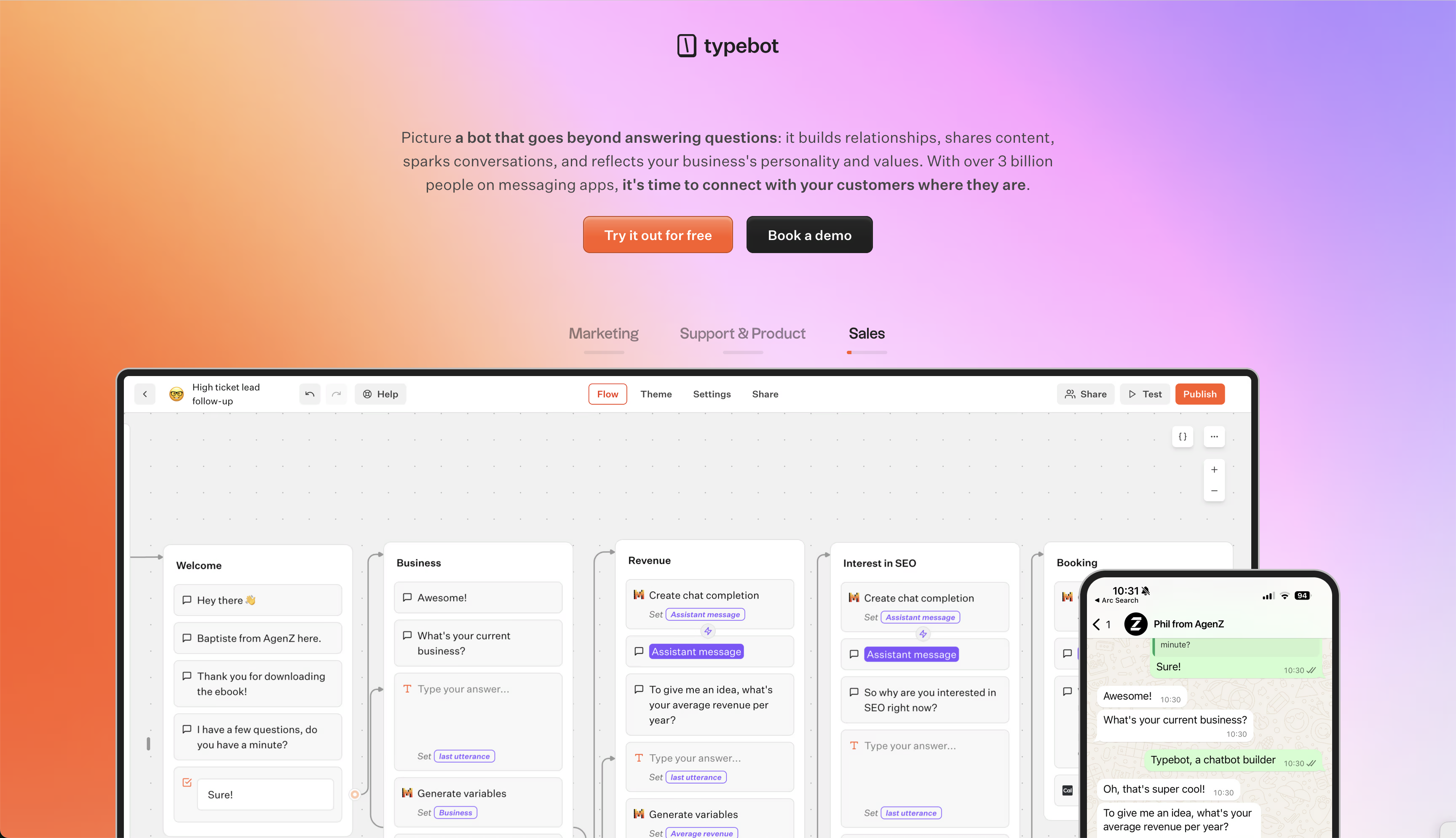
If you're looking for something simple and quick to set up, Typebot might be just what you need.
Key Features
- A drag-and-drop interface that makes building conversation flows a breeze
- 34+ pre-built blocks for rich interactions (buttons, payments, file uploads)
- Native WhatsApp integration and chat bubble embedding
- Tools for real-time analytics and improving conversion rates
Best For
Typebot is perfect for creating chatbots that look great and work even better. Its true no-code approach makes it ideal for marketers and non-technical users who need to quickly deploy conversational forms or chatbot interfaces.
Limitations
Typebot is great for user experience and frontend design, but it may lack the advanced AI orchestration capabilities of Flowise, particularly for complex, LLM-powered workflows.
This is why we wrote a guide on how to integrate Flowise with Typebot. It will help you bridge the gap between powerful AI workflow orchestration and seamless chatbot deployment.
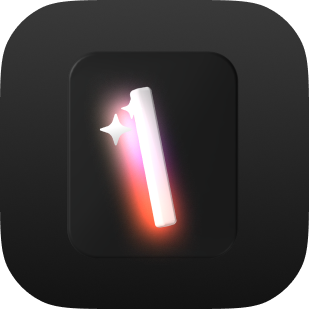
No trial. Generous free plan.
Langflow: A Framework for Building LLM-Powered Applications
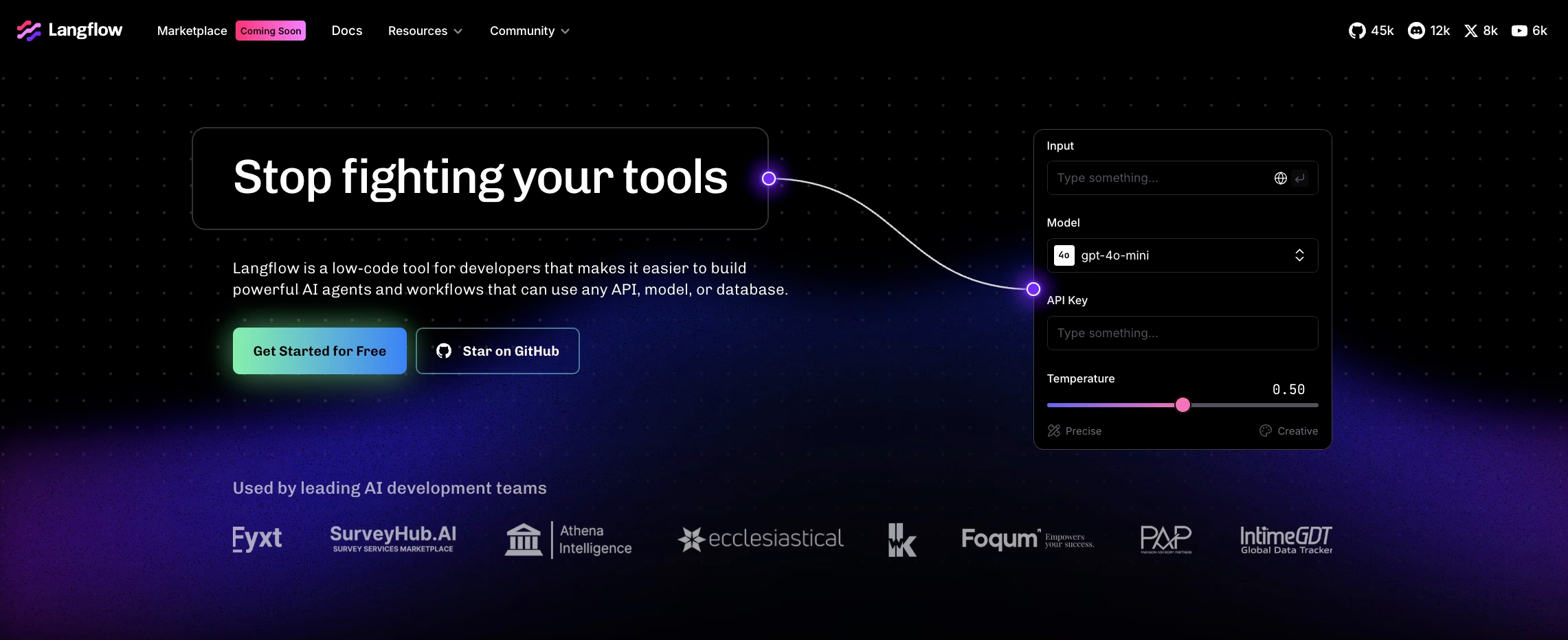
For those who want a bit more power and flexibility, Langflow is a solid choice.
Key Features
- A visual flow builder that simplifies even complex AI workflows
- Multi-agent orchestration for collaborative AI systems
- Python customization for extending functionality
- Deploy your projects to the cloud with just one click
Best For
Langflow is great for developers and data scientists who want to prototype quickly but still have room to tweak things with code. It's particularly strong for building retrieval-augmented generation (RAG) pipelines and multi-agent systems.
Limitations
Langflow might need a bit more technical know-how than Flowise, especially when customizing components with Python.
Botpress: Open-Source Conversational AI Platform
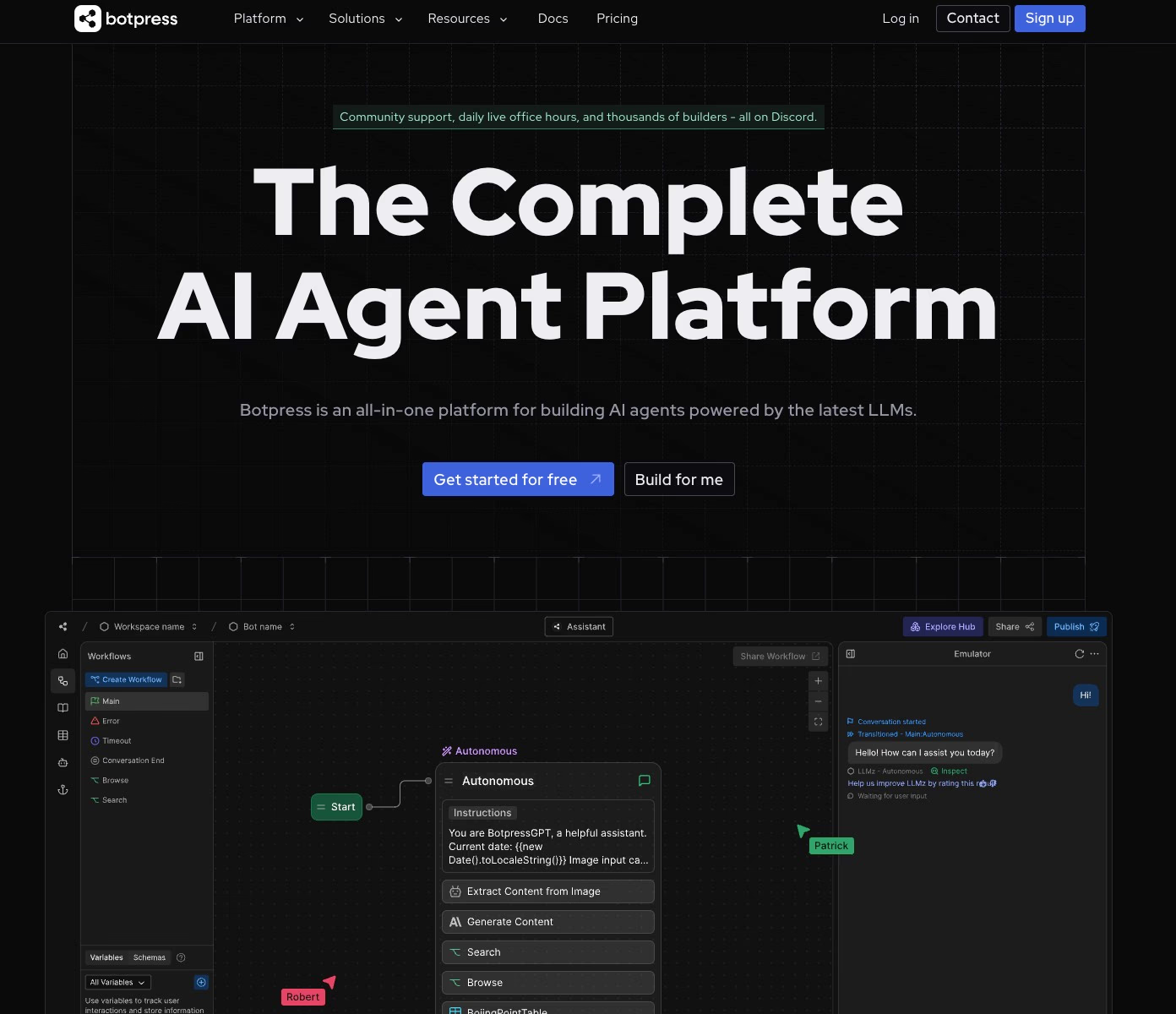
If you're after a platform that can handle more complex chatbot needs, Botpress has you covered.
Key Features
- AI agents designed for tasks like knowledge management, personality, and vision
- Flow builder for designing conversation workflows
- Multi-channel deployment (WhatsApp, Slack, Telegram, etc.)
- Powerful NLP features like intent recognition and entity extraction
Best For
Botpress is a great pick for enterprises and teams that need a scalable, AI-driven solution. It's particularly strong in scenarios requiring deep customization and integration with existing systems.
Limitations
Botpress is powerful, but it might take a bit more time to learn, especially when implementing advanced features.
Voiceflow: A No-Code Platform for Conversational AI
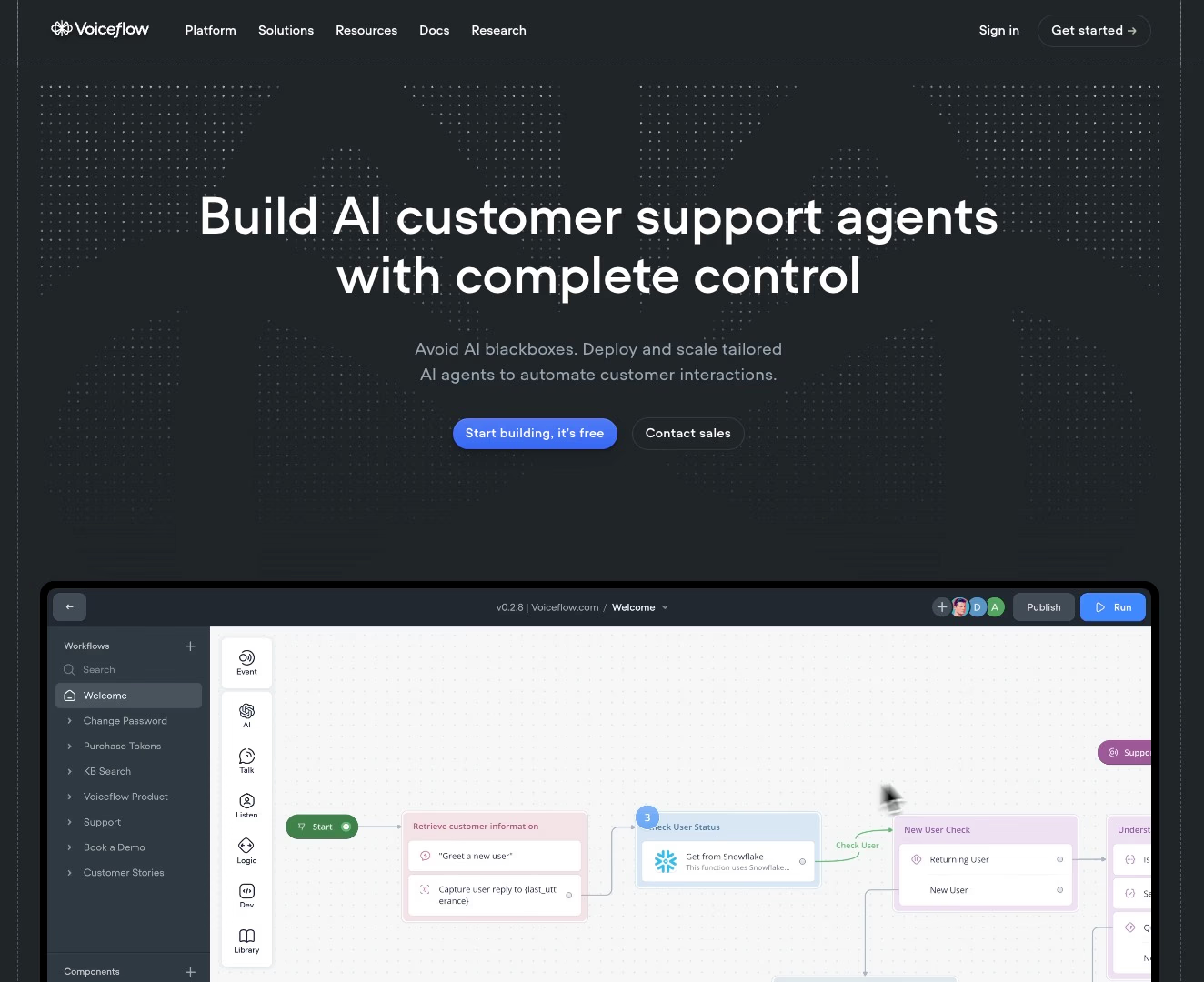
Looking for a collaborative platform that's easy to use? Voiceflow might be the answer.
Key Features
- A drag-and-drop workflow builder that's easy to use
- Multi-LLM support (GPT-4, Claude, custom providers)
- Knowledge base management with vector database integration
- Top-notch security and compliance features for enterprises
Best For
Voiceflow is perfect for teams that want to work together to design and deploy AI agents. Its strength lies in its balance between no-code accessibility and enterprise-level customization.
Limitations
Voiceflow has a lot to offer, but it might be pricier for large-scale projects compared to some open-source alternatives like Flowise.
Chatbase: AI-Powered Chatbot Builder for Businesses
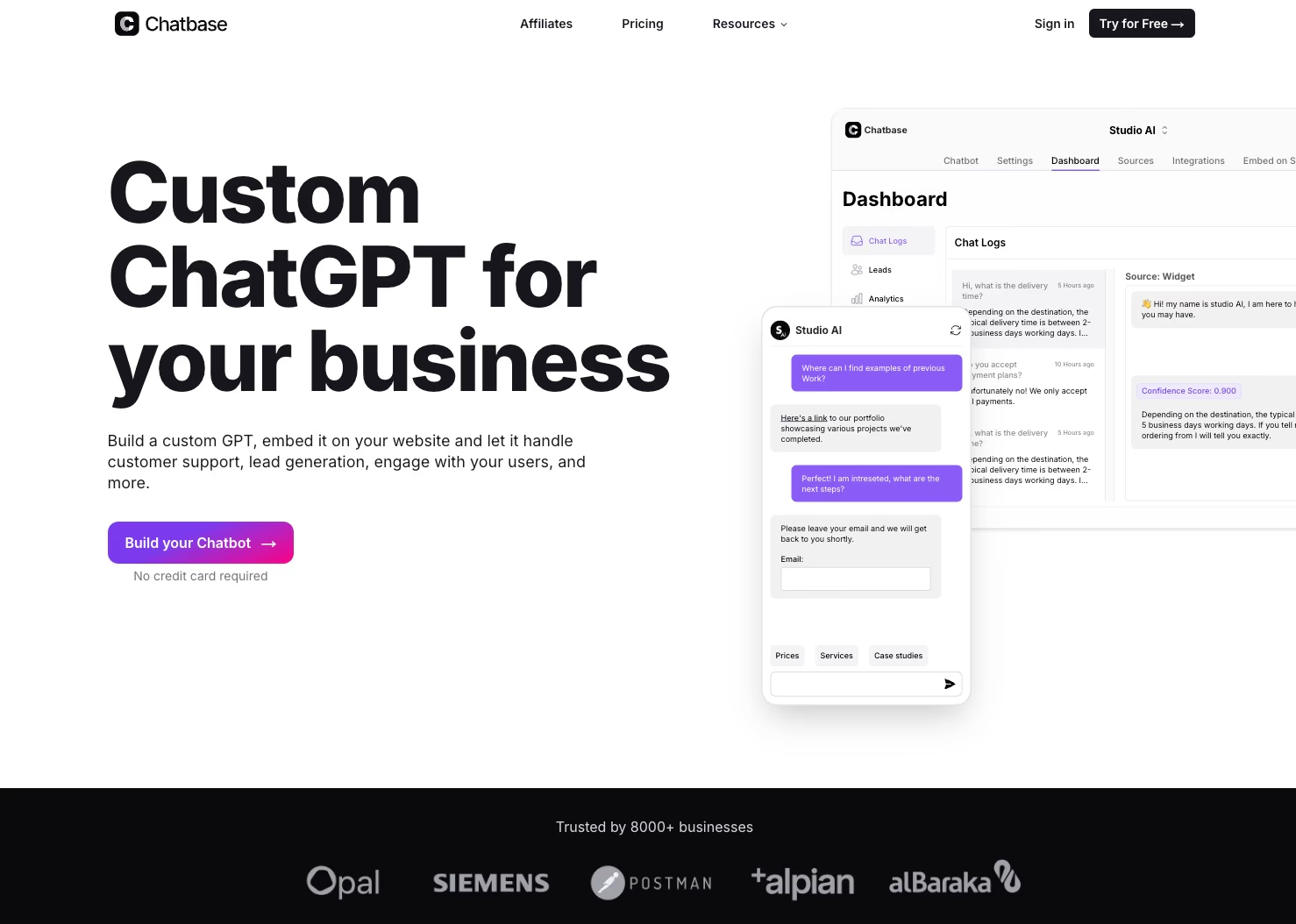
If you need a chatbot that's quick to set up and easy to train, Chatbase is worth a look.
Key Features
- Create custom personas with their own tone and style
- Multilingual support for 95 languages
- No-code embedding for easy website integration
- Tools for lead generation that sync seamlessly with your CRM
Best For
Chatbase is a great fit for small businesses and e-commerce teams that want to automate customer interactions. It's particularly useful for those wanting to train chatbots on specific data sources quickly.
Limitations
Chatbase is easy to use and quick to deploy, but it may not provide the same level of advanced AI workflow customization as Flowise for complex, multi-step processes.
Each of these alternatives offers unique strengths that may suit different project needs better than Flowise in certain scenarios. When picking the right alternative, think about what you need—customization, ease of use, scalability, or specific AI features.
Comparison of Key Features Across Flowise Alternatives
When evaluating alternatives to Flowise for AI agent development, it's crucial to understand how each platform stacks up in terms of essential features. How do these platforms compare when it comes to the features that matter most? Each one has its strengths and weaknesses. Let's break down the key features to see how these platforms stack up for developers and businesses alike.
Drag-and-Drop Interface and Ease of Use
How easy is it to get started with these platforms? Let's take a look. A platform's ease of use can make or break how quickly you can get up and running. Here's how the alternatives compare:
| Platform | Drag-and-Drop | Ease of Use | Learning Curve |
|---|---|---|---|
| Typebot | ★★★★★ | ★★★★★ | Low |
| Langflow | ★★★★☆ | ★★★★☆ | Medium |
| Botpress | ★★★★☆ | ★★★☆☆ | Medium-High |
| Voiceflow | ★★★★★ | ★★★★☆ | Low-Medium |
| Chatbase | ★★★★☆ | ★★★★★ | Low |
If simplicity is what you're after, Typebot and Voiceflow are clear winners here. Chatbase, while slightly less visual, offers a user-friendly experience that's particularly appealing for quick chatbot deployment. Langflow and Botpress are powerful but might need a bit more technical know-how to unlock their full potential.
Integration Capabilities with AI Tools and Platforms
Integrations can make or break your AI agent's functionality—so how do these platforms measure up? Here's a breakdown of integration capabilities:
Typebot
- Comes with over 34 pre-built blocks for rich interactions
- Integrates with popular tools like Google Sheets, Zapier, and Make.com
- Native WhatsApp integration
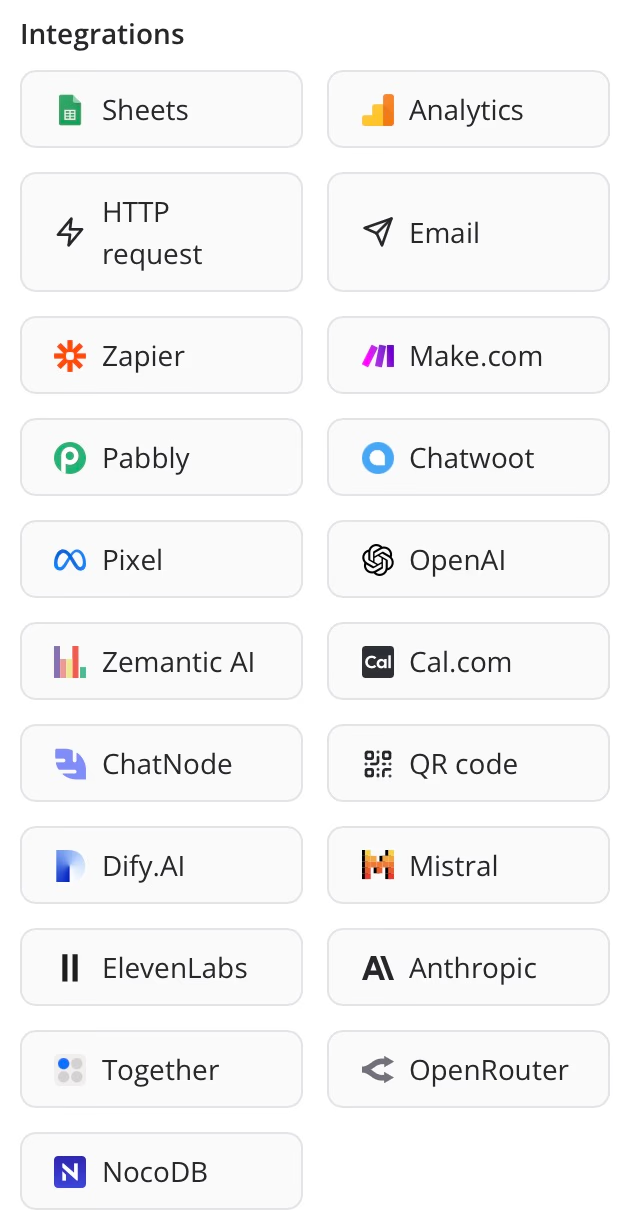
Langflow
- Agnostic to LLMs (OpenAI, Anthropic)
- Supports various vector databases (Astra DB, Pinecone)
- Includes API integrations to expand its functionality
Botpress
- Multi-channel deployment (WhatsApp, Facebook Messenger, Slack, Telegram)
- Built-in GPT engine for advanced AI features
- Open API for custom integrations
Voiceflow
- Multi-LLM support (GPT-4, Claude, custom AI providers)
- Integrates with vector databases to manage knowledge effectively
- API library for custom integrations
Chatbase
- Integrates with Zapier, Slack, WhatsApp, and WordPress
- Soon to support Shopify and Facebook Messenger
- RAG technology for accurate, data-driven responses
If flexibility is your top priority, Langflow and Voiceflow are hard to beat. But if you're focused on multi-channel engagement, Botpress and Typebot are great options.
Customization and Theming Options
Want your AI agent to look and feel like it belongs to your brand? Here's how these platforms handle customization:
-
Typebot: Lets you customize everything from CSS to Google Fonts, and even add avatars and icons.
-
Langflow: Offers decent customization through its visual tools, plus Python for advanced tweaks.
-
Botpress: Includes a Personality Agent to tweak chatbot tone and behavior, plus visual customization tools.
-
Voiceflow: Gives you plenty of options for visual customization and branding.
-
Chatbase: Lets you create custom personas with unique names, tones, and styles to match your brand.
If you're all about visuals, Typebot and Voiceflow have you covered. But if you're a developer who loves to code, Langflow's Python support is a game-changer.
Pricing Models: Free vs. Paid Features
Let's talk money—how do these platforms compare when it comes to pricing? Knowing the pricing details can help you pick the right platform without breaking the bank. Here's a brief overview:
| Platform | Free Tier | Paid Plans Start At | Enterprise Options |
|---|---|---|---|
| Typebot | Yes | $39/month | Custom pricing |
| Langflow | Yes (OSS) | Free (self-hosted) | Custom (DataStax) |
| Botpress | Yes | $1/month (per bot) | $495/month (Team) |
| Voiceflow | Yes | $50/month (Team) | Custom pricing |
| Chatbase | Yes | Tiered plans | Custom pricing |
Typebot, Voiceflow, and Chatbase offer tiered pricing plans, and all three have free tiers for testing or smaller projects. Botpress uses a per-bot pricing model, which can save you money for smaller projects.
When choosing an alternative to Flowise, consider not only the current features and pricing but also the long-term scalability and support offered by each platform. The best choice will depend on your team's skills, integration needs, customization goals, and budget—so weigh your options carefully.

No trial. Generous free plan.
Use Cases and Best-Fit Solutions for Flowise Alternatives
When considering alternatives to Flowise for AI agent development, it's crucial to match the right tool to your specific needs. How do you know which tool is the right fit for your needs? It depends on a few key factors. Your team's skills, your project goals, and your budget all play a role. Here's a breakdown of the best tools for different situations and user needs.
Best Alternatives for Small Businesses and Startups
If you're running a small business or startup, you're probably looking for something affordable and easy to use. In this context, two standout options are:
Typebot
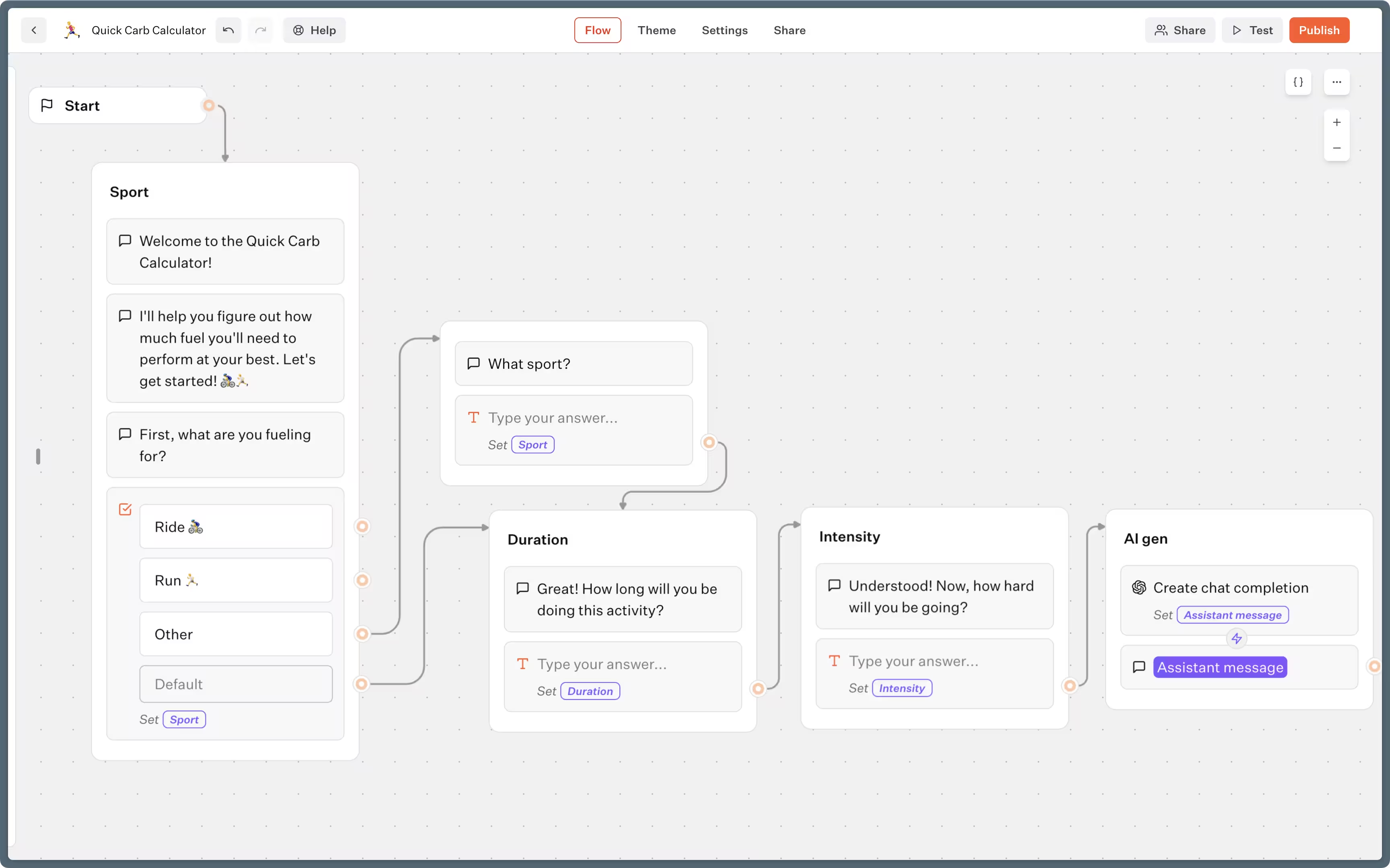
Typebot is a standout for its no-code simplicity, perfect for teams without a lot of technical expertise. Its strengths include:
- User-friendly drag-and-drop interface
- Ready-to-use templates for things like lead generation and customer surveys
- Native WhatsApp integration for direct customer engagement
Chatbase
Chatbase is a great option if you need to get an AI-powered chatbot up and running fast:
- Set it up in under 10 minutes by uploading your documents or website links
- Affordable pricing tiers suitable for growing companies
- Strong multilingual support (95 languages) for businesses with global ambitions
Want to learn more about creating AI chatbots for lead generation? Check out Typebot's comprehensive guide on building effective lead generation chatbots that can transform your marketing strategy.
Best Alternatives for Developers and Technical Teams
For developers and technical teams, having more control and customization options is key. These Flowise alternatives offer robust features:
Langflow
Langflow strikes a great balance between easy visual tools and Python's flexibility, making it a top pick for technical teams:
- Visual flow builder for rapid prototyping of AI pipelines
- Deep customization capabilities through Python integration
- A Tool Mode that lets you create reusable components to streamline your workflows
A senior developer at a tech startup noted, "Langflow's balance of visual tools and code flexibility has significantly accelerated our AI development process."
Botpress
Botpress is perfect for teams that want advanced AI features but still value ease of use:
- GPT-native engine for sophisticated conversational AI
- A modular setup that makes customization easy
- Strong multi-channel deployment options (WhatsApp, Slack, Telegram, etc.)
Best Alternatives for Enterprise-Level Applications
Enterprises need tools that are scalable, secure, and packed with features—and these options deliver:
Voiceflow
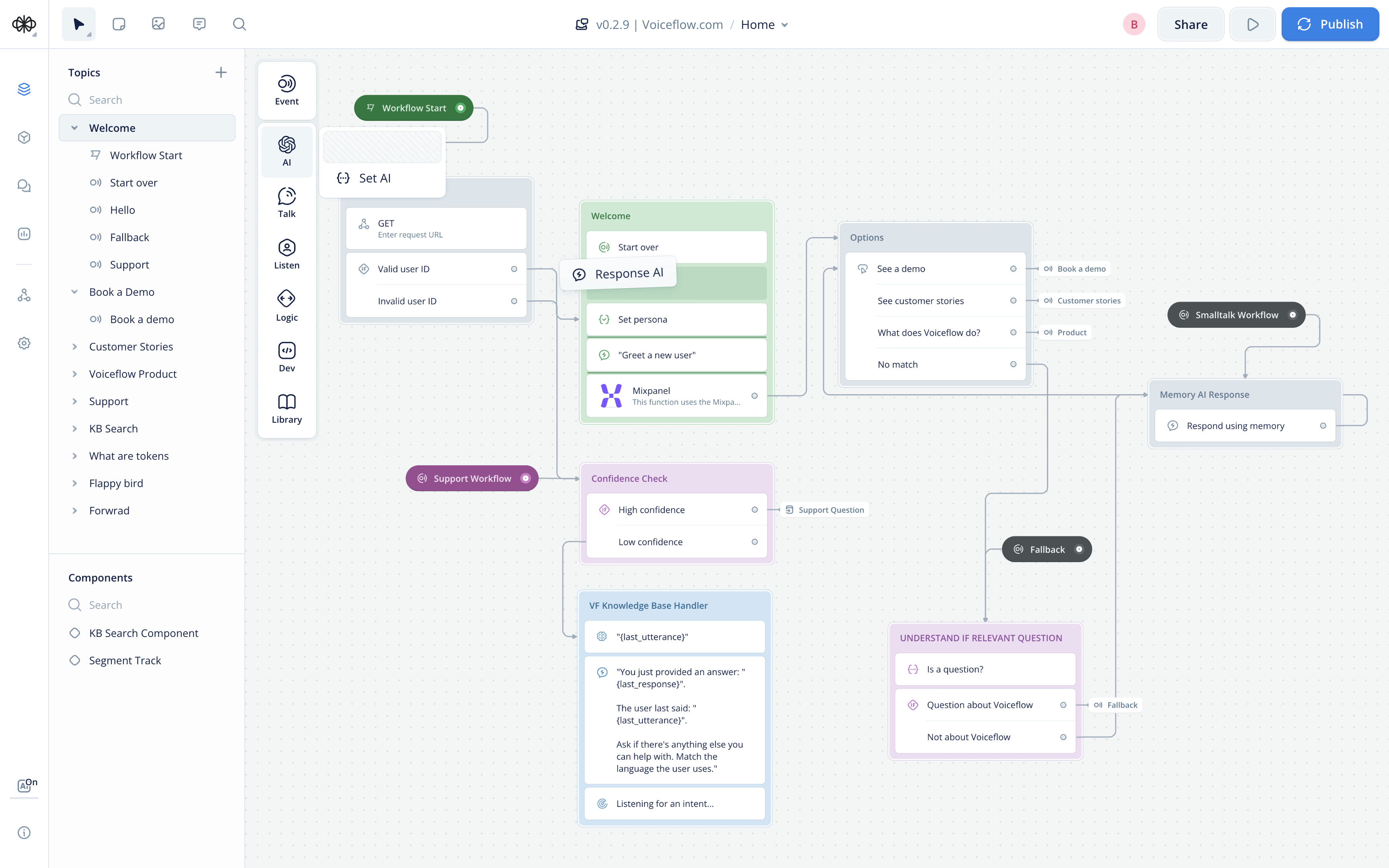
Voiceflow is a standout for its enterprise-level features and team-friendly tools:
- SOC-2 and ISO27001 compliance for robust security
- Multi-LLM support for flexibility in AI model selection
- A full API library that makes integrating with your existing systems a breeze
A product manager at a Fortune 500 company shared, "Voiceflow's enterprise features and collaborative tools have allowed us to streamline our AI agent development across multiple departments."
Botpress (Enterprise Edition)
Botpress works for smaller teams too, but it really shines in enterprise settings:
- Scalability to handle millions of records and complex workflows
- Advanced AI-powered automation features
- Analytics you can customize to track performance in detail
Which Alternatives Are Best for Educational or Non-Profit Use Cases?
If you're in education or running a non-profit, you'll want something affordable and easy to use. Consider these options:
-
Typebot: With its free tier and simple interface, Typebot is a great fit for educational projects or non-profit outreach.
-
Langflow: Langflow's open-source nature makes it a great choice for academic and non-profit projects, offering a powerful tool for learning and experimentation.
-
Chatbase: Chatbase's free tier and quick setup make it a great option for non-profits that want to boost their digital presence fast.
How to Choose the Right Alternative Based on Your Project Needs
So, how do you pick the right tool for your project? Here's a practical approach:
-
Assess your technical expertise: For non-technical teams, no-code tools like Typebot or Chatbase are your best bet.
-
Evaluate scalability needs: If you're planning for rapid growth, make sure the platform can scale with you.
-
Consider integration requirements: Need to connect to other tools? Look for platforms with strong API support or built-in integrations.
-
Analyze cost structure: Check the pricing plans to see what fits your budget and usage needs.
-
Test drive top contenders: Try out free trials to get a feel for the platform before making a decision.
Remember, the best alternative depends on your project goals, your team's skills, and your long-term plans for AI development.
Future Trends in AI Agent Development Platforms
The landscape of AI agent development is rapidly evolving, with exciting innovations on the horizon. What's next for AI agent development platforms? We're seeing some fascinating trends emerge. From open-source solutions to multimodal AI, the future looks bright. Let's take a closer look at these trends and what they mean for businesses and developers.
The Rise of Open-Source Solutions in AI Development
Open-source AI is changing the game, making advanced tools accessible to everyone. This trend is driven by several factors:
-
Community collaboration: Projects like Meta's Llama models are speeding up innovation by encouraging collaboration. This often leads to rapid advancements and quick bug fixes.
-
Specialization: Open-source frameworks such as TensorFlow and PyTorch let developers build custom solutions for industries like healthcare, finance, and education.
-
Sustainability: New funding models, including corporate sponsorships and community-driven development, are helping open-source AI projects stay sustainable for the long haul.
As open-source AI continues to mature, we can expect to see more robust alternatives to proprietary platforms, offering transparency and customization that could rival commercial platforms.
Increasing Focus on No-Code and Low-Code Platforms
No-code and low-code platforms are making it easier than ever for non-technical users to create AI applications. This trend is characterized by:
-
AI integration: These platforms now use AI to auto-generate code, streamline workflows, and add predictive analytics, making it easier for users to create sophisticated applications.
-
Market growth: The no-code/low-code market is projected to reach $187 billion by 2030, thanks to project completion times that are 50-75% faster than traditional methods.
-
Enhanced collaboration: Real-time collaboration features and AI-assisted debugging are becoming standard, helping teams collaborate more effectively on complex projects.
This democratization of AI development is likely to lead to a surge in innovative applications across various industries, as experts in any field can turn their ideas into working AI agents without needing to code.
Integration of Advanced AI Models
AI platforms are stepping up their game by integrating cutting-edge models:
-
Reasoning engines: Models like OpenAI's GPT-4 are being integrated to solve complex tasks in fields such as law, medicine, and software development, helping AI agents tackle more complex and context-specific questions.
-
Efficient models: Smaller, more efficient models like Meta's Phi-3 and Google's Gemma are cutting costs without sacrificing performance, making advanced AI more accessible to a wider range of applications and devices.
-
Multimodal training: Tools that combine text, images, and other data types (like AlphaFold for protein folding or DALL-E for image generation) are giving AI agents new ways to understand and interact with the world.
These advancements will enable AI agents to handle increasingly complex tasks, from crunching data to solving creative challenges in different fields.
Voice Integration
Voice AI is evolving fast, moving beyond simple commands to more natural conversations:
-
NLP advancements: Platforms are incorporating sophisticated natural language processing capabilities to detect emotions, understand slang, and handle multilingual inputs, making interactions feel more natural and human.
-
Real-time agents: Ultra-low latency voice AI, like that offered by Dasha.AI, is enabling more responsive and dynamic conversations, which is especially handy for customer service and sales.
-
Ethical considerations: As voice AI becomes more prevalent, platforms are adding safeguards like deepfake detection and tools to prevent impersonation.
These developments in voice AI will make interactions with AI agents smoother and more natural, no matter the device or platform.
Agentic Workflows
AI agents are becoming more autonomous, taking on complex, multi-step tasks:
-
Multi-agent collaboration: Platforms are enabling the creation of specialized agents that can work together to tackle tasks like fraud detection in finance or inventory management in retail.
-
Self-learning capabilities: Reinforcement learning techniques are being integrated to help AI agents get smarter and make better decisions over time, particularly useful in dynamic environments like supply chain optimization.
-
Ethical frameworks: As AI agents become more autonomous, platforms are incorporating auditing tools and bias mitigation techniques to make sure they're used responsibly.
This trend towards more autonomous and collaborative AI agents could make business processes and decision-making much smoother.
How Will AI Agent Platforms Evolve to Support Multimodal AI?
The future of AI platforms lies in their ability to handle multiple types of data at once:
-
Cross-modal fusion: Platforms will increasingly support the combination of text, images, audio, and sensor data, making things like smarter self-driving cars and better medical tools possible.
-
Real-time adaptation: AI agents will be able to adjust their responses based on environmental cues, similar to Google's Multimodal Transformer, making interactions more dynamic and responsive to the environment.
-
Industry-specific solutions: We can expect to see more tailored multimodal AI solutions, like healthcare tools that combine MRI scans with patient records or retail assistants that mix visuals and voice.
-
AR/VR integration: As augmented and virtual reality technologies mature, AI agent platforms will likely incorporate these modalities, bringing immersive training, design tools, and customer experiences to life with multimodal AI.
By 2025, we can anticipate AI agent development platforms prioritizing flexibility, accessibility, and ethical governance. These advancements will enable businesses to harness the power of multimodal data and autonomous workflows at scale, unlocking new opportunities for innovation in different industries.
As AI agent platforms continue to evolve, keeping up with these trends will be key. Whether you're currently using Flowise or exploring alternatives, staying ahead of these trends can help you plan your strategy and make the most of what's coming next in AI development.
Conclusion: Finding the Ideal Alternative to Flowise
Flowise is undoubtedly a powerful open-source platform for building LLM-powered applications and AI agents. Is it the right fit for every project, though? Not necessarily. Its advanced capabilities in workflow automation and LLM orchestration require a technical learning curve. This can be challenging for non-technical users or projects that need simpler, plug-and-play solutions.
Flowise excels in backend AI processing and integration flexibility. However, its visual workflow builder might not be as user-friendly or polished for conversational design as some other tools.
That's where the alternatives come in. Depending on your specific needs, there are plenty of robust options to explore. Each of these tools has its own strengths: Typebot makes chatbot creation easy with pre-built templates and a great conversational experience, Langflow gives you unmatched flexibility for RAG applications, and Chatbase is perfect for businesses that want a super-fast setup and to get started in no time.
Jump in, start building, and take the next step in your AI journey.

No trial. Generous free plan.